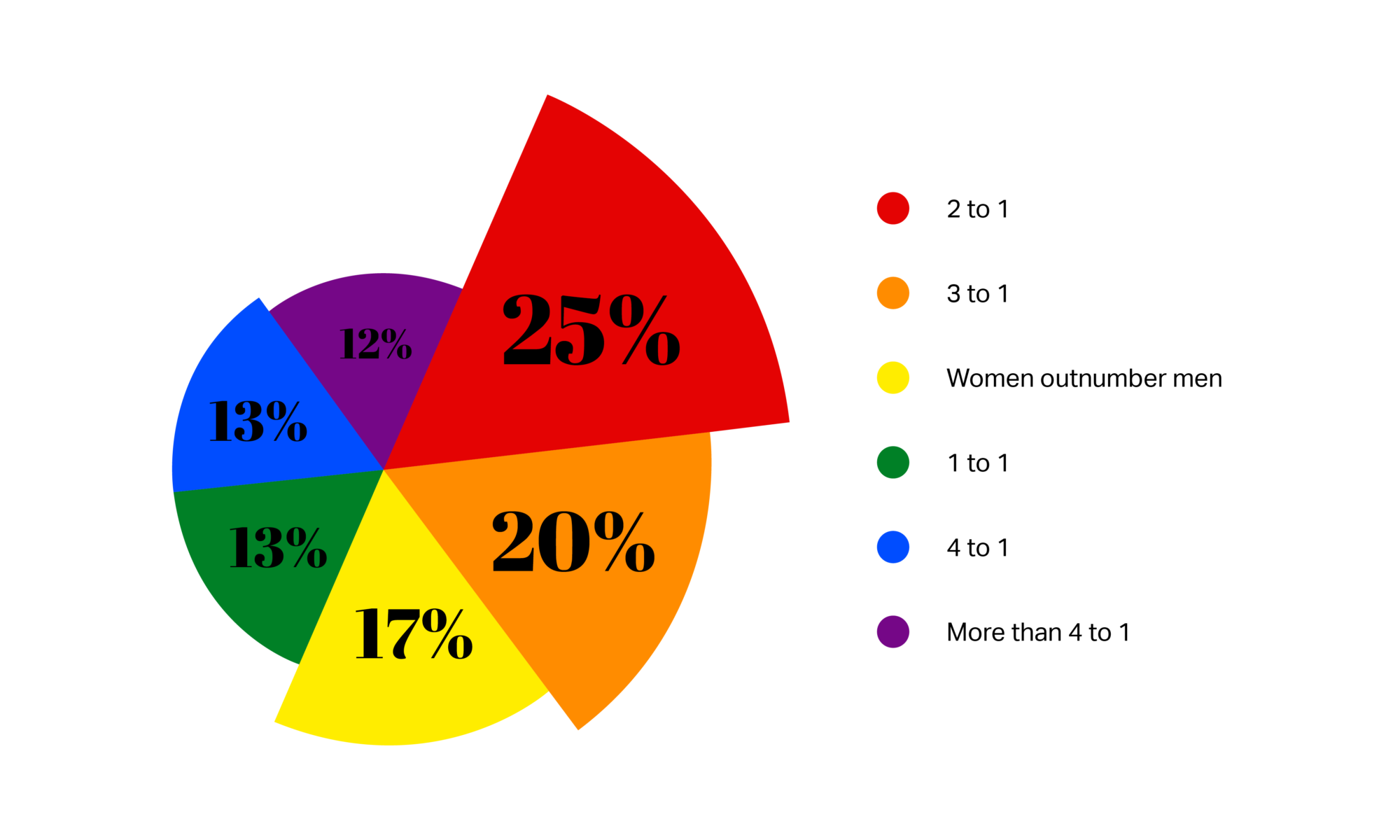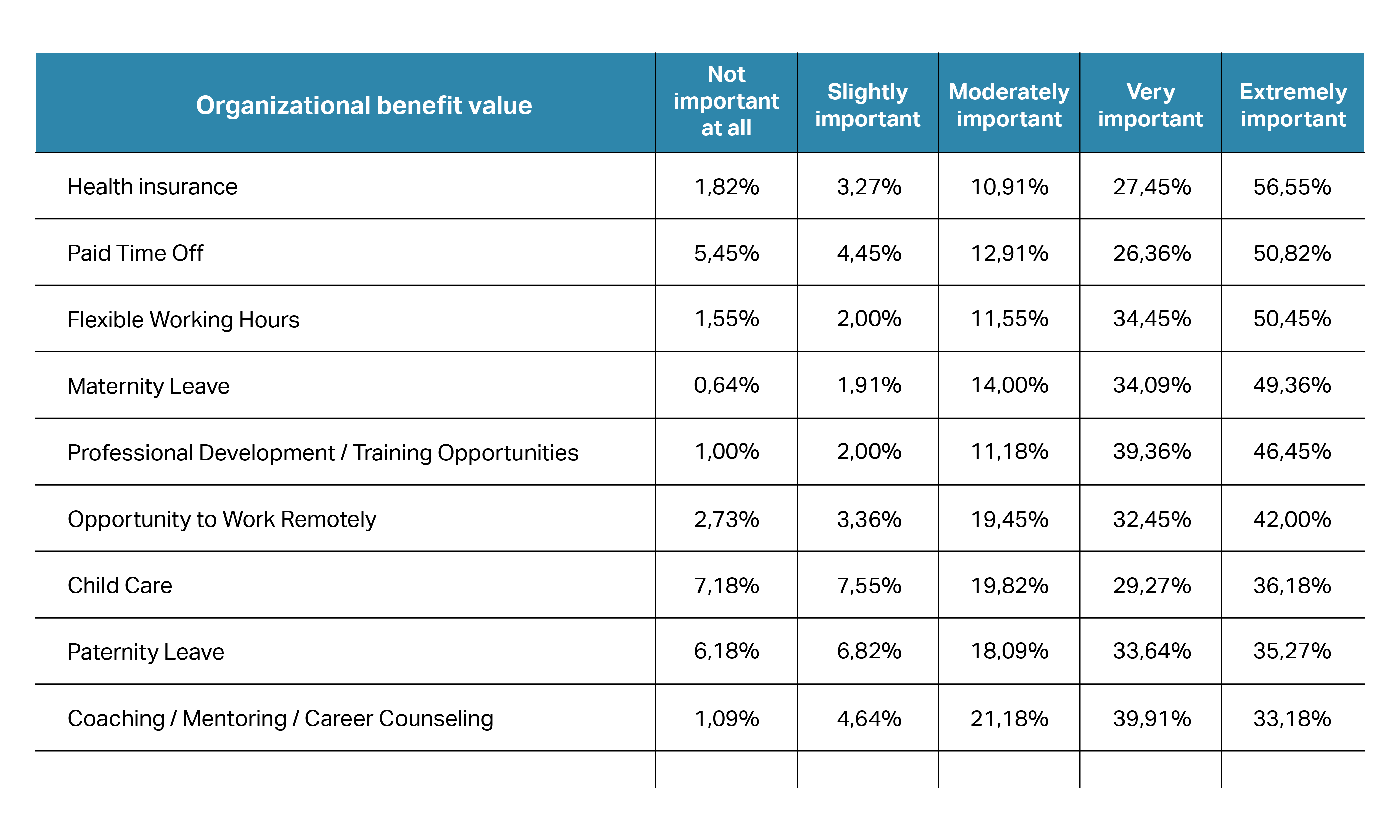Facts & figures
Filling in vacancies has become one of the most critical issues for modern companies. (un)Luckily, there is a great untapped resource. Women have represented a growing minority in tech for decades – from 7% to 27% in the past 50 years. However, there is still a lot of work to be done. These are the figures.
Every year, the female workforce representation increases by 1%. This leaves us at 27% of the total workforce at the start of 2022. This is progress. It’s a step in the right direction. However, it is not enough. Tech companies need to work harder to improve these numbers. Let’s take a deep dive.
Gender imbalance
70% of women in IT reported that men outnumber them at ratios of 2-to-1 or greater. 26% of women are outnumbered by 5-to-1 or more at meetings (Skillsoft). This makes the female voice less likely to be heard. Having so little female presence at the table leads to the silencing of women.
Looking at company leadership, the same trend maintains. Around 29% of board members are female. Even worse, only 11% of companies have a woman at the wheel (AnitaB.org).
Across all job levels, women feel more pressure to prove themselves. 78% of women have stated this, versus 54% of men. The phenomenon is even more pronounced among those in leadership positions. For men, the opposite is true.
It is no surprise 72% of women in tech have worked at a company with a strong ‘bro culture’. Only 41% of men say the same. This shows a considerable difference in perception. It can be hard for those in power, or those not negatively affected, to recognize problems within the culture.
All these figures translate into the notorious salary gap. According to WomenTech Network, women in the IT sector earn 19% less than men.

Inequality starts at school
The lack of balance in the workplace begins with inequality in the classroom. Tech-related subjects as maths, physics and chemistry are perceived to be more ‘male’. This acts as a deterrent for some female students who would otherwise be interested. Over a quarter of female students said they had been put off from a career in technology because it’s too male dominated.
It also means that girls are less likely to be pushed forward in these areas. Just 16% of females have been suggested a tech career compared to 33% of males.
The lack of female role models is also reinforcing the stereotypes. When asked to name a famous woman in tech, only 22% of people are able to do so.
83% of high school boys choose tech subjects, compared to 64% of girls, and only 27% of female students say they would consider a career in technology, compared to 61% of males. This results in only 3% (!!!) of females saying a career in technology is their first choice.
Males graduating in tech-related subjects like science, mathematics, computing, engineering, manufacturing, and construction outnumber female graduates almost two to one. All this to say: women in tech start with a disadvantage.
Stumbling blocks
Undoubtedly, women in tech still have loads of obstacles to face. 38% cite an equitable salary as a leading challenge. Likewise, a lack of work-life balance (36%), a lack of equity with male counterparts (33%), and a lack of training opportunities (32%) are issues they frequently encounter.
It is important to know these problems are not exclusive to the tech sector. Consider the following findings of a study done by Qualtrics and The Boardlist. They found that in the United States during the pandemic:
- 34% of men working remotely with children at home received a promotion, versus 9% of women in the same situation
- 26% of men with children at home said they received a pay raise while working remotely, compared to 13% of women with children at home
- One in four women are considering downshifting their careers or leaving the workforce altogether
The story in Europe is horribly similar.
What do women want?
It’s not all bad news. Skillsoft has found out that the average salary for women in tech is increasing 8% year over year.
Even more encouraging is that women are taking action to mentor or coach other women. This leads to women having a better perception of what they want, and they are starting to demand more from employers.
So, what do women want? Studies show that the most important benefits employers can offer to women are professional development and training opportunities (86%). Paid time off (85%) and healthcare (84%), flexible working hours (83%) and maternity leave (77%) follow close.
Getting women interested in a tech job has proven to be challenging. Professional development and training opportunities (55%) are the best way to encourage more women to pursue tech-related careers. Childcare (47%), coaching, mentoring, and career counseling (43%), and an equitable work culture (41%) are also on top of the list.

Why it matters
Gender diversity is highly beneficial to the company.
A diverse executive team is 25% more likely to have above-average profitability. When it comes to work performance, companies with high gender diversity outperform those with low diversity by as much as 48%.
While there are increasingly more women in tech, it’s still very much a man’s world.
To close the gender gap, we need to start introducing tech careers to female students. Introducing prominent women in tech role models to young female students can inspire them to choose the tech life. It can also help them see that tech jobs are not exclusive to men.
Aside from starting girls early on coding and tech, it’s also crucial to address the different challenges in the workplace these figures highlight. We cannot increase gender diversity in tech if women technologists keep on leaving their roles due to issues like lack of professional growth, discrimination, and even sexual harassment. Our duty as a company is to devise and implement strategies that focus on creating an inclusive and safe work environment for women in technology.
When women rise, we all win.

